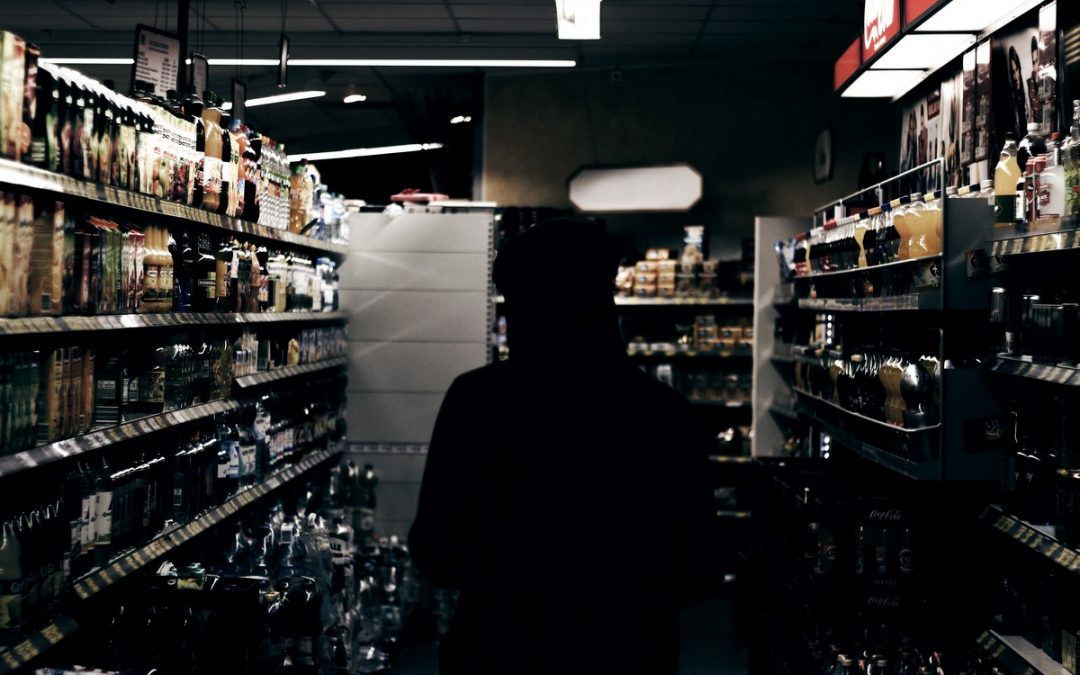The media has been buzzing about Walmart’s efforts to minimize shrinkage. The retail giant is using artificial intelligence (AI)-powered cameras at the checkout at more than 1,000 of its stores as part of an initiative called “Missed Scan Detection.” The smart cameras use an algorithm that detects if items weren’t scanned properly or if shoppers left items in their carts — as well as intentional attempts at fraud and theft.
Retail shrinkage and loss is a widespread problem. The National Retail Federation’s 2019 National Retail Security Survey reports that shrinkage percentages of retailers’ inventory have been holding at about 1.4 percent for the past several years. Overall, this represents billions of dollars of losses for the retail industry. Besides, more retailers are reporting shrinkage rates at the higher end of the spectrum of 3.0 percent and more. In 2014, 6.6 percent of retailers experienced shrinkage at that rate, but last year, that number rose to 10.9 percent of retailers.
Business Insider points out that if Walmart’ U.S.’ business experienced shrinkage at the industry average, it would have meant a loss of $4 billion last year. Walmart has been using its AI cameras for about two years and reports that during that time, it has seen a decrease in shrinkage.
How to Reduce Shrinkage If You Don’t Have Walmart’s Resources
There are other ways besides AI-powered checkout cameras to help minimize the shrinkage rate at your retail business. Here are seven best practices that can help you reduce loss and keep a healthier bottom line:
- Keep eyes on the store: Whether you use security cameras, mirrors, or aisle configurations that don’t create blind spots, you can deter shoplifting by letting people know you’re watching.
- RFID loss prevention: If you sell in-demand, high-ticket items, consider using radio frequency identification (RFID) tags and readers to alert your staff that an item is leaving the store without having the tag removed at checkout.
- Reserve high-risk tasks for managers: Require manager approval for transactions such as returns, voids, no-sale drawer opening, and refunds.
- Hold employees accountable: Stress to employees that they are responsible for having the correct amount in the drawer at the end of the shift.
- Streamline processes: Some shrinkage is the result of administrative error. Consider using an integrated point of sale system (POS system) that shares data with your accounting application or other business systems to eliminate transcription or keying errors.
- Train your staff: Make sure each of your employees understands the security measures and cash handing best practices you have in place and what their role is in keeping your store safe from losses. Written policies and a training program will ensure that even your newest employees are prepared to handle situations that can lead to shrinkage.
- Double-check vendor shipments: Confirm shipments to make sure they match your invoice and that you’re getting what you pay for.
Always Use Best Practices, Even If You Deploy a High-Tech Solution
Technology will continue to advance, giving you new options to curb shrinkage, but using common-sense loss prevention best practices will always make sense. Whatever the size of your store, tech budget, or staff, start with the basics and do all you can to protect your business.
Want to know more about how the right POS system can help you reduce shrinkage? Contact PlazSales.
To help pizzeria owners, pizza point of sale (pizza pos) is more than just a cash register or adding machine — it’s a hub where you can manage your entire business.
Pizza shops have long managed their business in the traditional, manual manner. Much like pizza itself, why stray too far from what has worked? This may mean using pen and paper to order ingredients, taking down orders over the phone. You may be using a non-integrated payment system to swipe credit cards. But that means workflows that take extra time through a shift and at the end of the day. Modern customers want the convenience of online ordering and payment. And like customers always have, they still expect prompt service and their food served warm and tasty as ever.
With Pizza POS, you can streamline your operations to reduce waste. It’s a win for everyone: The more efficiency you can build into your business, the more successful you will be at keeping your customers and employees happier.
Pizza POS Features
Point of sale systems for pizzerias are unique among those for other restaurants and businesses because pizzerias are a different kind of operation. Pizzas are almost endlessly customizable in a way that other restaurants are not expected to deal with. How big of a pie does a customer want? Which certain toppings only go on which certain halves? It’s easy for a mix-up or misunderstanding to occur when relaying these orders verbally and recording them manually. Better to have a system that is designed and optimized for these specific kinds of orders.
Pizza POS systems need to give your business these capabilities:
- Modify options for size and toppings on pizzas. When the menu changes, the system can easily adapt as well.
- Inventory management that lets you know exactly what you have, how much you use, so you never run out of ingredients while reducing food waste.
- Online ordering to suit busy customers’ schedules and for added convenience.
- Delivery management to provide your delivery drivers with directions and constant traffic updates to get them where they need to be on time. You can also let your customers know when their delivery is dispatched so they aren’t left guessing.
- Loyalty program features to keep your customers coming back by rewarding them for doing so. The right pizza POS system will allow you to digitally manage your customer accounts and rewards with ease.
- Customer relationship management (CRM) that allows you to optimize your sales and marketing campaigns, forecast future sales, and automate simple digital features to leave your staff more time for complex tasks.
- Integrated payments — no longer take that extra time at the end of the day to do your payment reports.
- Offline mode for business continuity, even if your network connection is interrupted
- Reporting that provides you with visibility into what your customers are ordering, their preferred methods of payment, the times the rush comes in, and track labor hours and employee performance.
Just What You Ordered
In this day and age, pizzerias face steep competition and small profit margins. To keep operating while making a profit, you need the ability to operate efficiently and build a base of loyal customers. When it comes to optimizing your business, in all specifics unique to pizzerias, pizza POS can help.
To learn more about point of sale systems that help pizzerias run efficiently and profitably, contact PlazSales.
For more tips, information, and insights, subscribe to our blog. It only takes a few seconds to subscribe by entering your email address.


Recent Comments